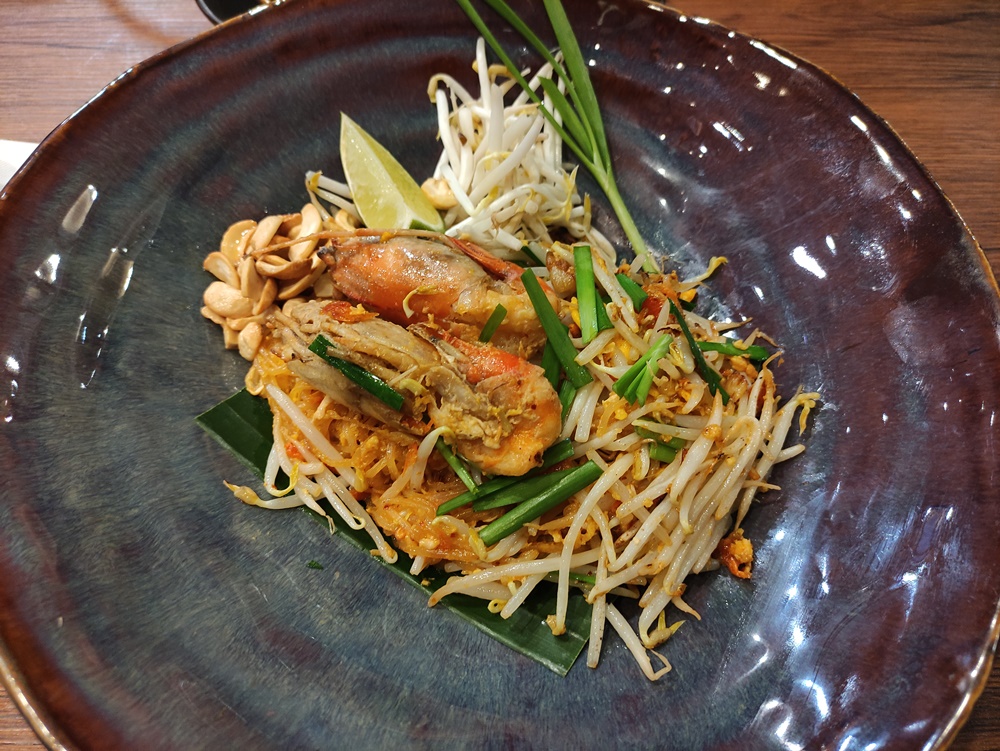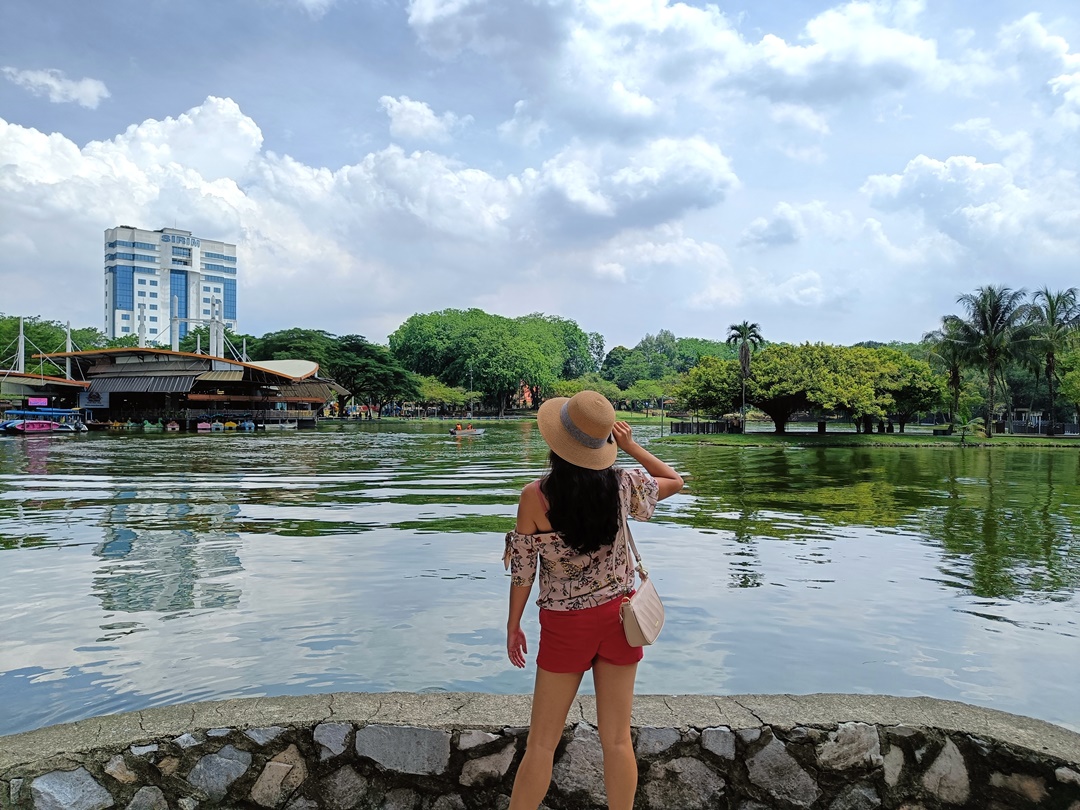Wat Chalong is the largest and most visited temple in Phuket, drawing flocks of worshippers and tourists alike. This site has deep religious and patriotic importance with its rich history as well as a sacred relic on its grounds.
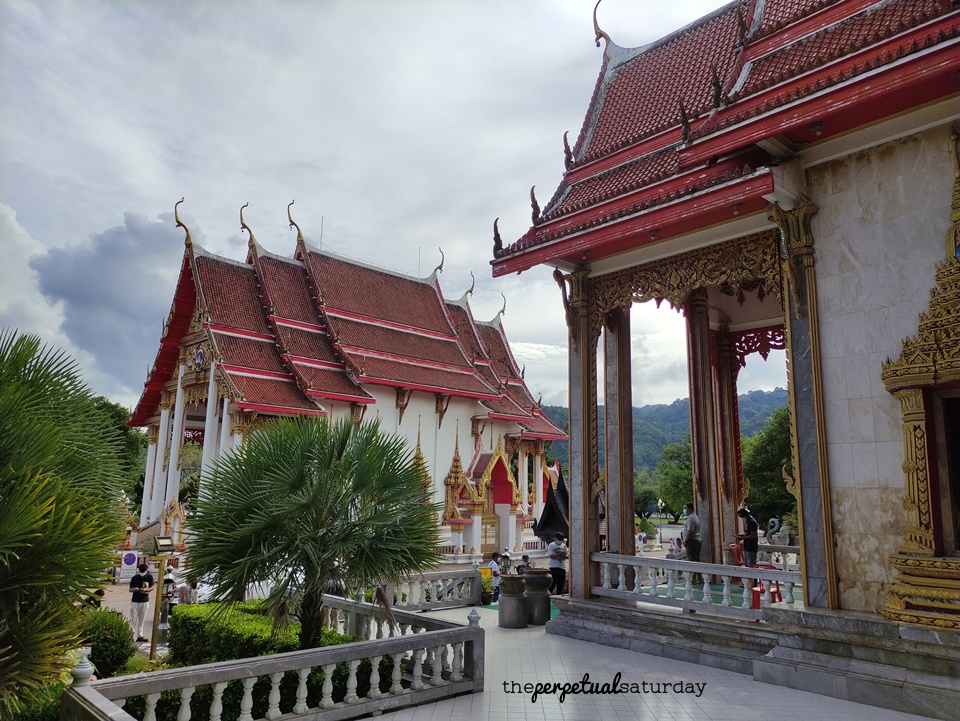
How To Get Here & Parking
Opening Hours & Entrance Fee
History
What To See
Food & Facilities
Saturday Worthy?
Basic Info at a Glance
How To Get to Wat Chalong & Parking
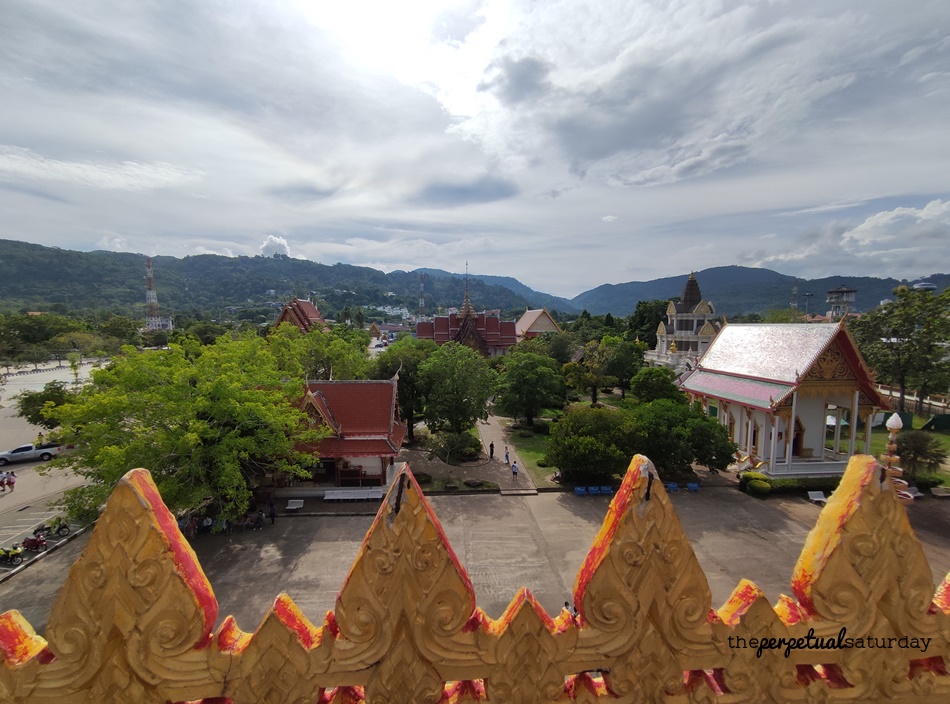
Driving
Wat Chalong is about a 30-minute drive from Patong and a 20-minute drive from Phuket Old Town. Driving from Patong will require a roundabout route as the hills are in the way. The journey is on major city roads and the actual temple grounds are in a suburban area. Parking is free at Wat Chalong.
Taxi
A taxi fare to Wat Chalong will likely cost at least 800 Baht. With the fares as outrageous as they are in Phuket, it will be more economical to simply hire a driver for the day. This way, you can see all of the faraway attractions for one price and have the convenience of a car waiting for you. The standard rate for a driver is 1800 Baht for 8 hours. We recommend Mr Phongsak Rordsong or “Crab” (Contact: 086 684 3510 or WhatsApp: +66 866 843 510). There’s also the popular John Welcome, though he tends to send subordinate drivers for small groups.
Bus
There is a bus that goes to Wat Chalong from Old Town and Patong Beach. You might have seen the Blue Songthaews zooming around. These open-air blue buses with a ladder on the back are a cheap way to get around that the locals use. They run about every 45 minutes, from 7 am to 6 pm.
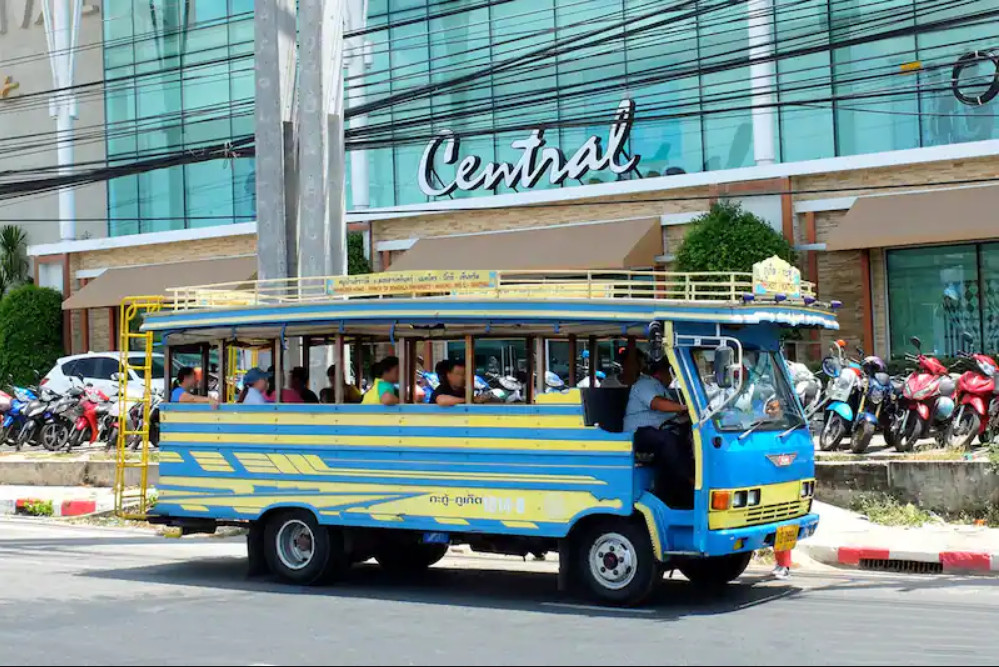
The fares start at 15 Baht but depend on the distance of your ride. Do note that this is not a proper bus service! There are no designated bus stops or fixed fares. You must flag down a bus and know when to push the buzzer to disembark. The general direction of the route will usually be written in English on the side.
If you’re in Old Phuket Town, a common place to catch a Songthaew is at the Phuket Town Central Market on Ranong Road. Your hotel concierge should know more details, so double-check with them first. You want the bus heading to Chalong. The driver should understand the words Wat Chalong, and he’ll tell you the fare. The ride will take about 40 minutes.
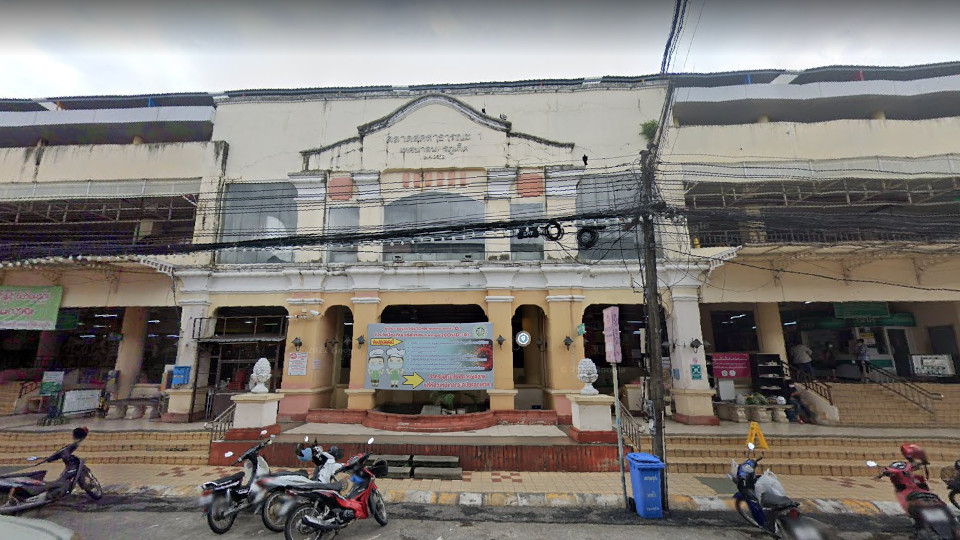
The journey from Patong requires a transfer and is a lot longer. The best place to flag a Songthaew is on Thaweewong Road, which is at the end of Bangla Road. You’ll have to take the bus going to Phuket Town, which will cost around 20 Baht. The terminus stop will be the Phuket Town Central Market. Then, you’ll have to take the bus described above and pay the fare again. This entire journey might take 2 – 3 hours.
Opening Hours & Entrance Fee at Wat Chalong
Wat Chalong is open from 8 am to 5 pm every day. Admission is free to the temple grounds and all of the buildings.
The standard dress code is in effect at Wat Chalong. Shoulders should be covered up, and bottoms should extend past the knees. Take off your shoes when entering any building.
History of Wat Chalong
Wat Chalong has stood in its current location for over a hundred years, since 1837. One of the founders of the temple includes the Abbott Luang Pho Chaem, who is still honoured to this day for his service during the Chinese rebellion.
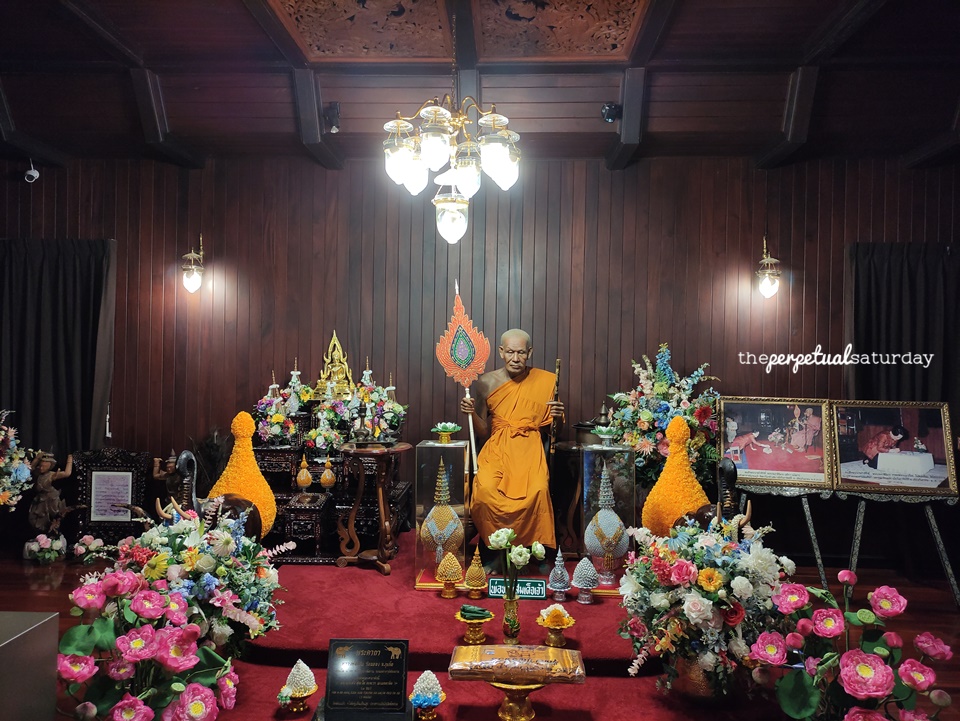
In 1876, tensions turned violent among the tin miners, many of whom were Chinese immigrants. The Chinese population in Phuket had grown and gained wealth and influence from the lucrative tin mining. Fed up with the poor working conditions and high taxation of the mines, the tin miners kicked off what would be called the Angyee Rebellion.
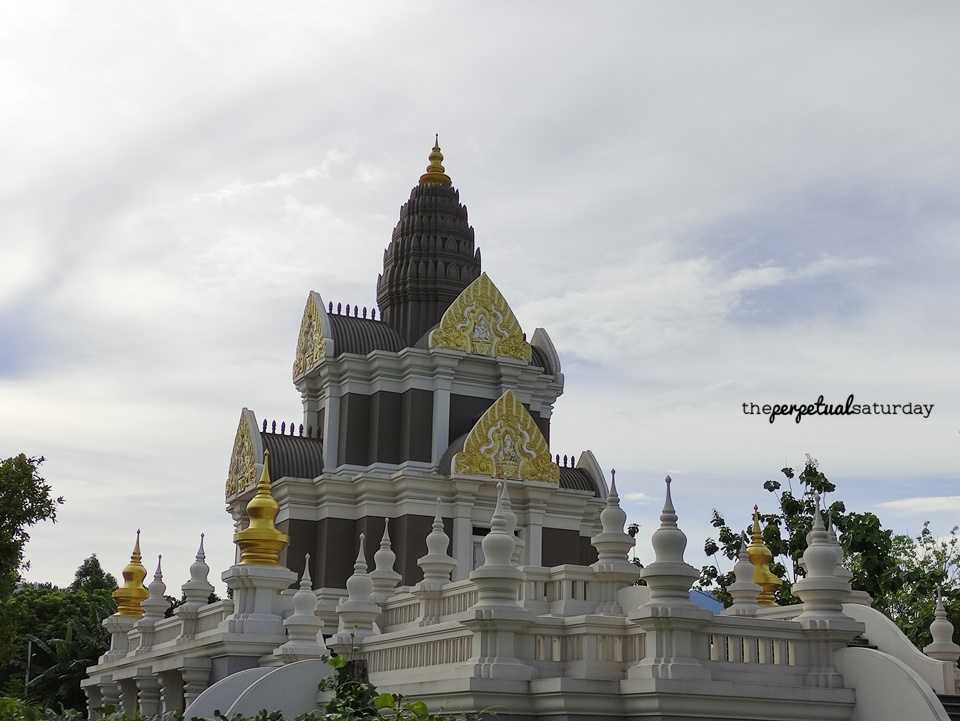
Chaem helped the wounded citizens with his knowledge of herbal medicine and turned the temple into a safe haven for refugees and the injured. After the conflict, Chaem received an honourable title from King Rama V. A disturbingly lifelike statue of Chaem can be found in the mondop (pavilion) building at Wat Chalong.
What To See at Wat Chalong
If you want an authentic experience, you can purchase some offerings. There is a large stall near the gate where various candles, flowers and joss sticks are for sale for a couple hundred Baht.
Phra Mahathat Chedi & Bone Fragment

The three-storied, 60-metre tall Phra Mahathat Chedi is probably one of the first buildings you’ll notice. This lightly pink building accented with gold is unassuming but draws the eye. Many sitting, standing and reclining Buddhas decorate the floor on the ground level. Murals line the entire room, and a jade Naga will guide you to the second floor.
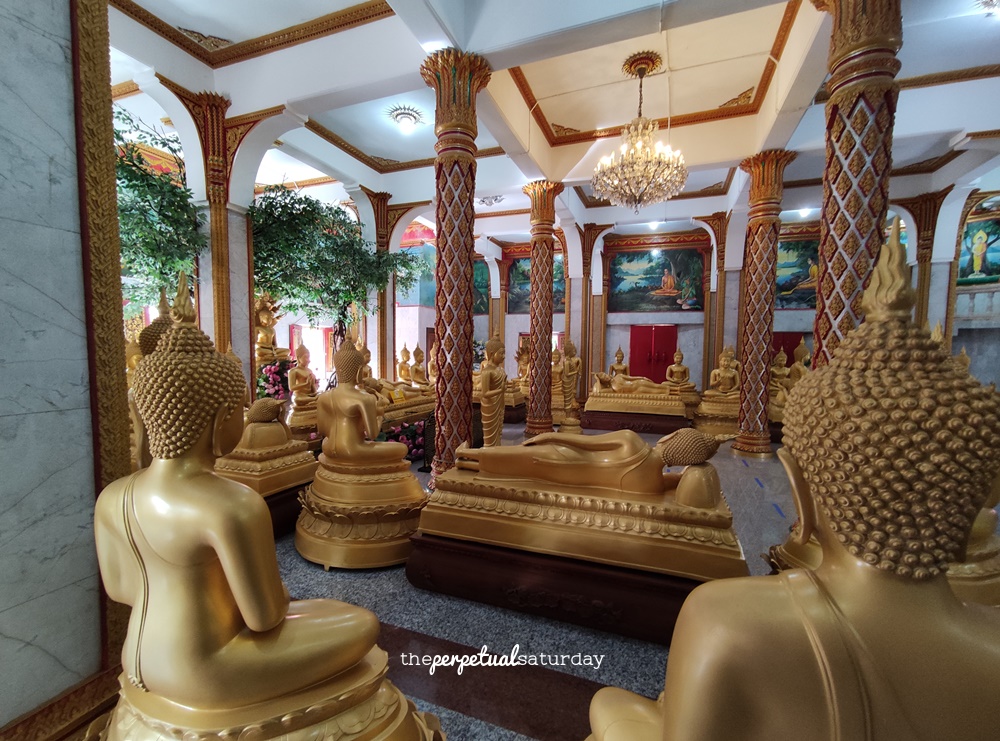
The second floor is more of the same, but there is more variety in the golden statues, with monks and guardians joining the Buddhas. Ascending further will take you to the terrace just below the tower. From the terrace, there is a view of the temple grounds and even the Big Buddha.
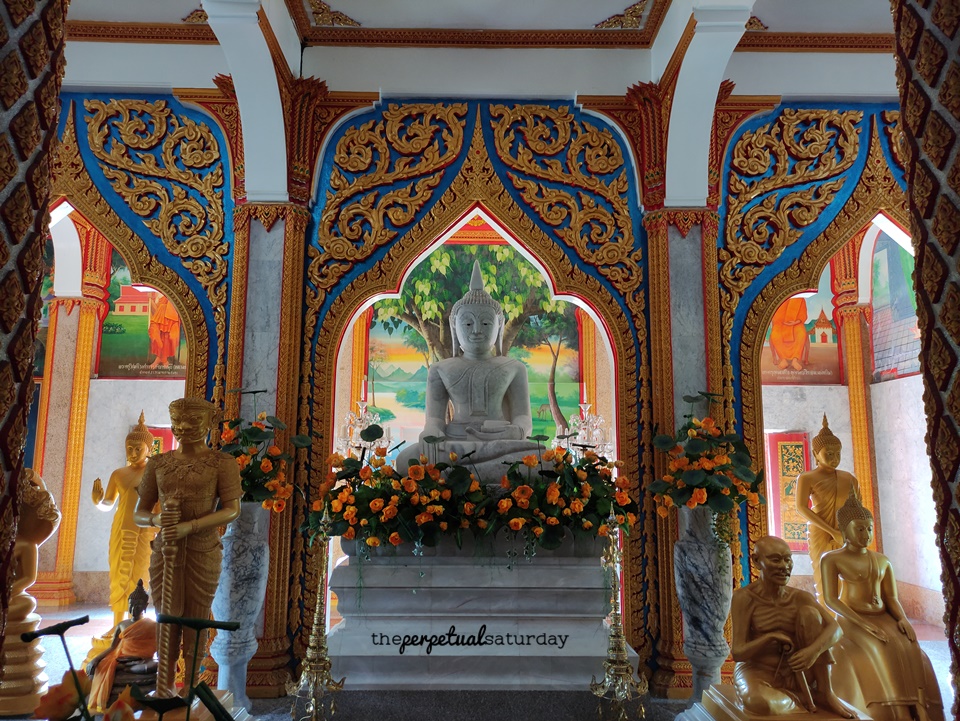
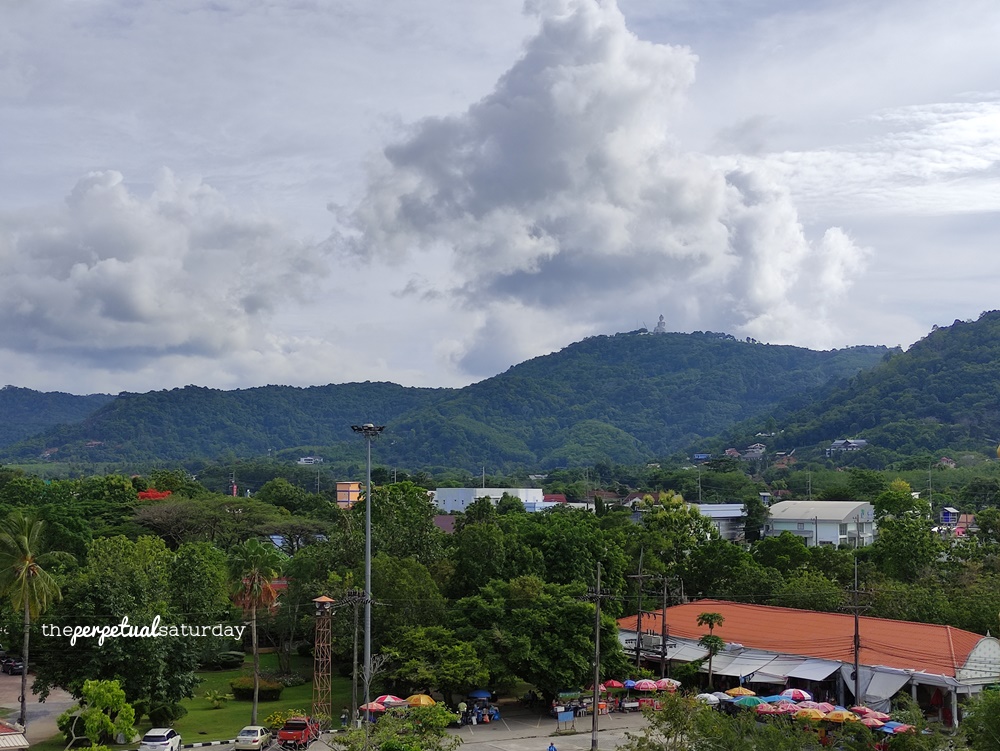
One of the reasons why Wat Chalong is so frequented is for the sacred relic housed here. Inside the tower is a bone fragment of Buddha in a glass case. There is a sign in English for a prayer you can make to the bone fragment, or simply contemplate the holy artefact.
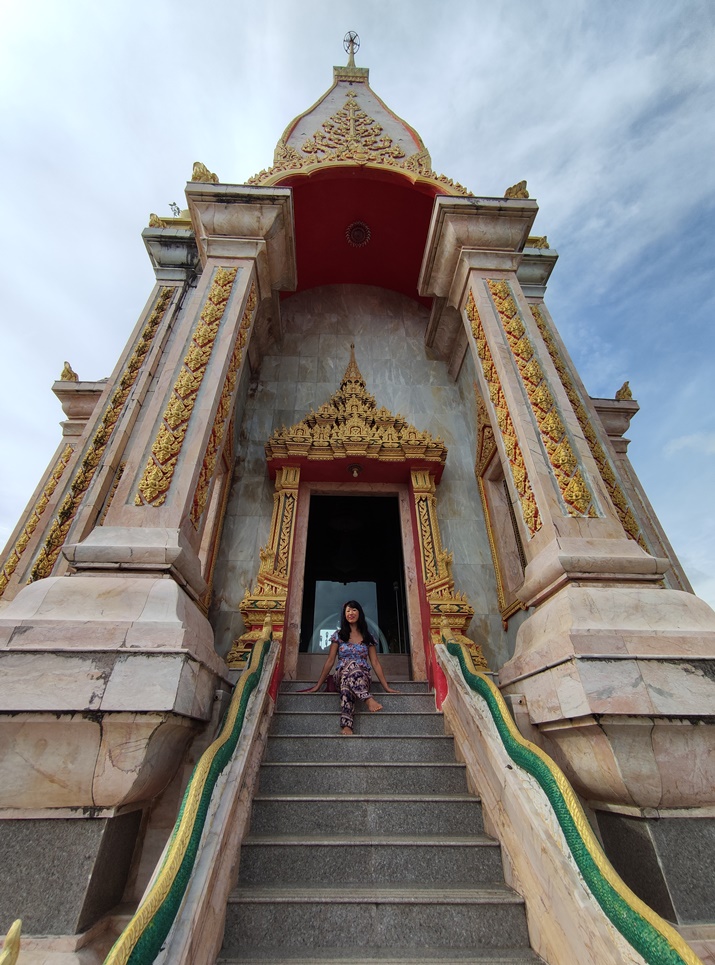
Temple Complex & Gardens
One building of interest is the pavilion. Inside this raised building is where you’ll find the previously mentioned statue of Luang Pho Chaem, along with two other revered monks. The dark wood panels give this place a much different look than the other buildings.
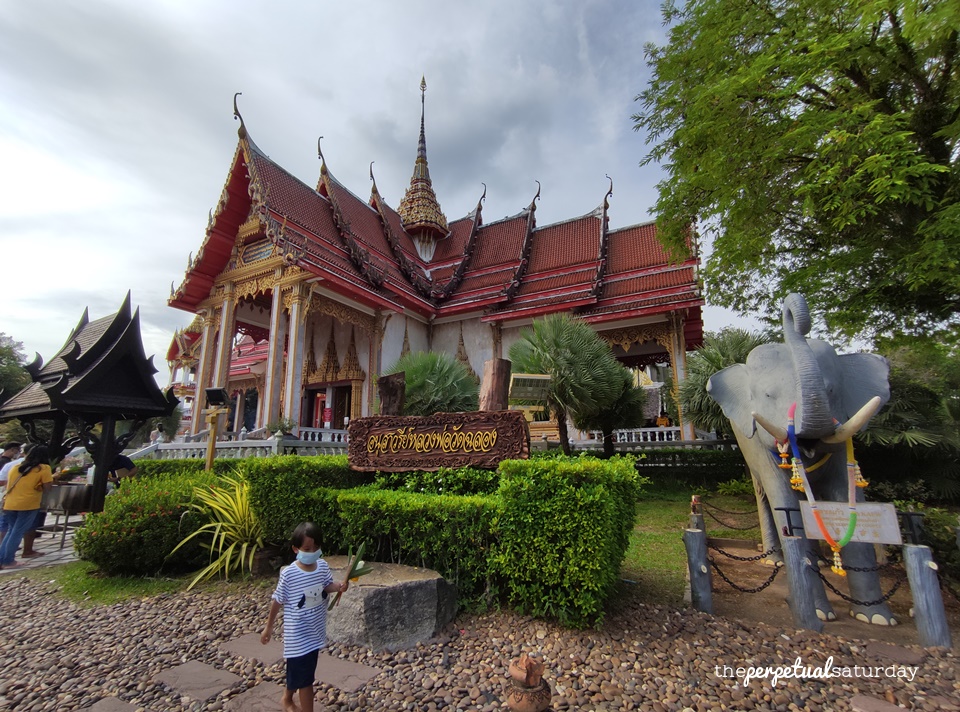
This building with a stone elephant out front was where the majority of people were doing their prayers and worshipping. A couple of the buildings cannot be entered, but their exterior design is worth a quick look. I especially admired the windows on this viharn that were fashioned to look like a chedi.
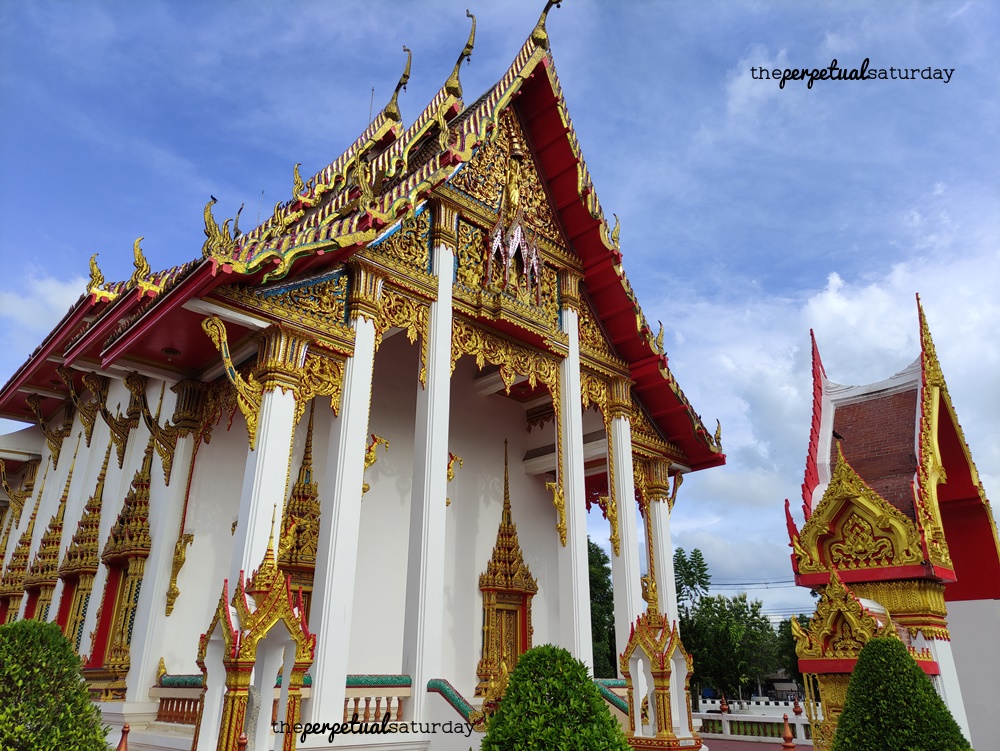
The gardens at Wat Chalong are small spaces in between the temples. There will probably be groups of locals hanging out in the shade, while tourists will be taking pictures in front of flower bushes under the sun. The vibrancy of the gardens seems to differ depending on the season. During our visit in May, the garden was lacklustre and colourless, and I did not bother with any proper pictures.
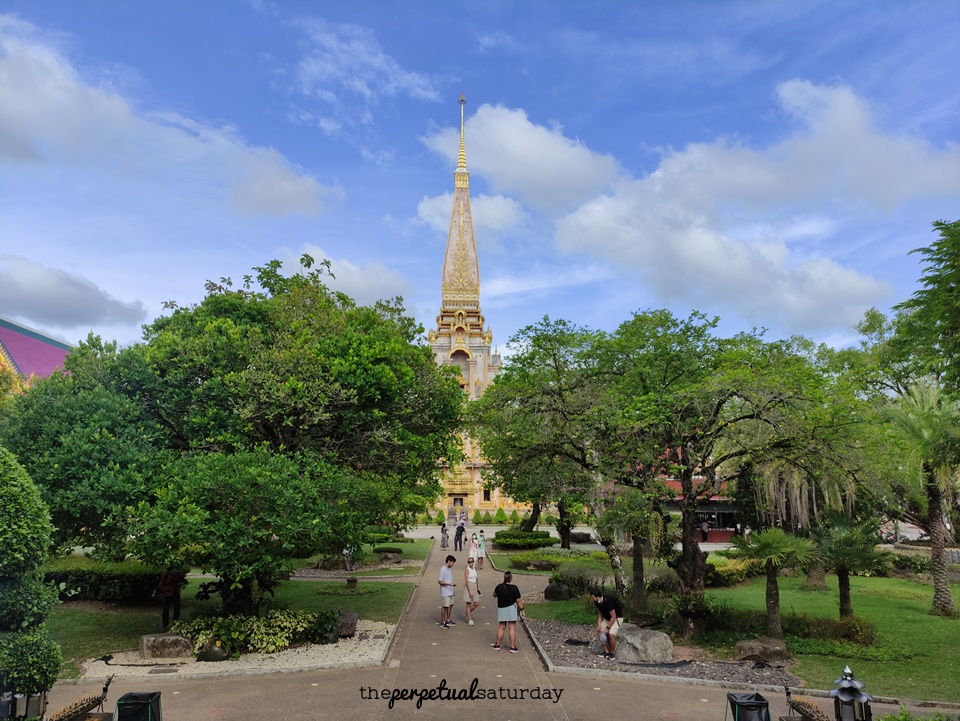
Chinese New Year Temple Fair

The Chalong Temple Fair has been going annually since 1954. When Chinese New Year rolls around (typically around the end of January to mid-February), Wat Chalong is a completely different scene from its usual quiet, dignified setting. During this time, it is converted into a fairground with food stalls, neon lights, and even rides! It can get very crowded and raucous with live music in the evenings.
Food & Facilities at Wat Chalong
You might be able to find some drinks at the stalls just outside the gate, but they mostly sell Buddha statues and temple offerings. Unless you’re coming when the fair is on, don’t count on there being any substantial food as they want to keep the temple grounds clean. It’s best if you make a plan to eat beforehand.
There are toilets on the grounds. If you’re at the main arch facing the temples, it is on the left side. The washrooms are nothing fancy but they did have sitting toilets in the women’s. There was soap at the sinks but be prepared for no toilet paper.
Saturday Worthy?
If you’ve never seen a Thai Buddhist temple complex before, Wat Chalong is a decent introduction to them. It is modest in size and not too crowded so you won’t get overwhelmed. The bone fragment is also a unique item that I had not seen before. I’ve been to more exquisite similar temples in my travels, so I was not too impressed with Wat Chalong.
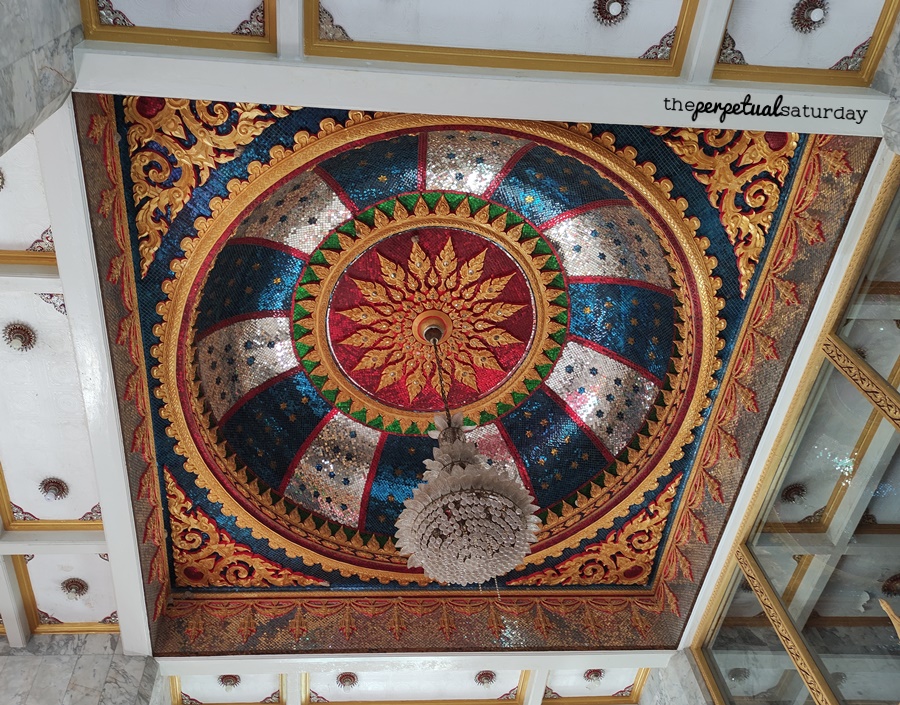
Driving or including this in a day tour is fine, such as combining this with the Big Buddha. I do not think it is worth an expensive taxi ride or troublesome bus to specifically see this. Wat Chalong is built more like a functional temple than a tourist attraction. If a trip to Bangkok is in your near future, there are much grander temples to see there, so you can safely give Wat Chalong a pass.
Wat Chalong
Address: 70 Moo 6 Chaofa Road (West), Chalong, Phuket 83000
Opening Hours: Daily, 8am – 5pm
Parking: Free
Washroom On Site: Yes



